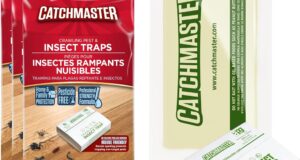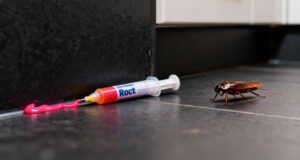
When it comes to pest control, the right insecticide makes a big change. Rising concern for safe methods in pest control has brought non-repellent insecticides into view. In this article, we look at the benefits, use, and science behind non-repellent insecticides. This clear view helps both experts and homeowners see why these insecticides are preferred.
What Are Non-Repellent Insecticides?
Non-repellent insecticides are a type of pesticide that does not push insects away. The insect crawls near the treated area and meets the chemical without warning. This close link between insect and chemical helps break down an insect’s strength. Invasive species suffer as the insecticide works when the insect gets close.
How Do Non-Repellent Insecticides Work?
Non-repellent insecticides work with strong active ingredients. These ingredients change insect behavior or body processes. When an insect walks on a treated surface, it picks up the poison. The insect may then bring the poison to its nest. This move affects more insects and helps control the full colony.
The Mechanism of Action
- Contact Toxicity: The insect touches the treated surface and takes in the poison through its skin. This contact can cause death in a short period.
- Ingestion: The chemical is mixed in a way that the insect eats it while feeding.
- Behavioral Disruption: The insect loses its normal actions, which may affect its ability to breed and maintain its group.
The Advantages of Non-Repellent Insecticides
- Better Reach: Insects come close to the treated surface, which spreads the poison throughout the colony.
- Lower Resistance: Insects are less likely to become immune when the chemical works slowly over time.
- Full Group Impact: Since insects go back to their nest after contact, the treatment reaches most of the group.
- Easy Use: The formulas make it simple for both experts and those who work on their own.
Common Uses of Non-Repellent Insecticides
These insecticides work well against pests such as:
- Ants: They work on carpenter ants and fire ants by letting the poison move in the colony.
- Termites: These pests are hard to control. Non-repellent insecticides can move deep into their groups for lasting control.
- Cockroaches: When cockroaches hide in small spaces, the treatment works well because the chemical reaches their nests.
Points to Remember When Using Non-Repellent Insecticides
Using non-repellent insecticides calls for care. Follow the maker’s directions and watch safety rules. Check how the insecticide may affect helpful insects that live near your home. Targeted treatment plans and mixed pest control methods give more control and help keep the area safe.
Conclusion
Non-repellent insecticides change how we manage pests. Their method of working is simple: the poison meets the insect without warning. This sharp link in treatment and insect behavior makes pest control more effective and steady. Both experts and homeowners now choose non-repellent insecticides to gain strong control in their space. With careful use and a clear plan, you can guard your home from unwelcome pests with good results.




